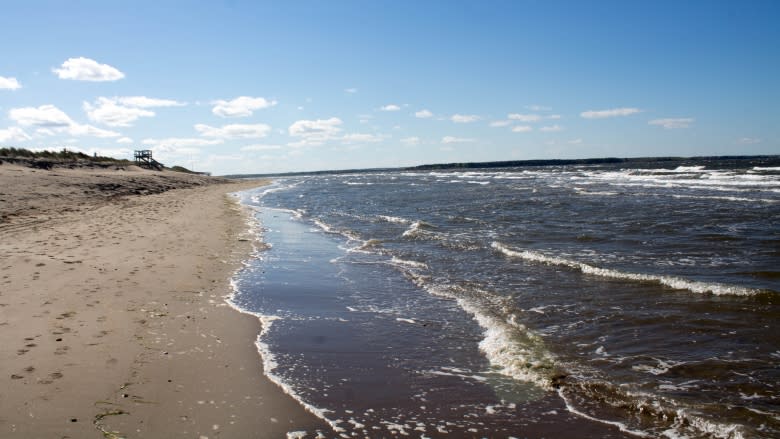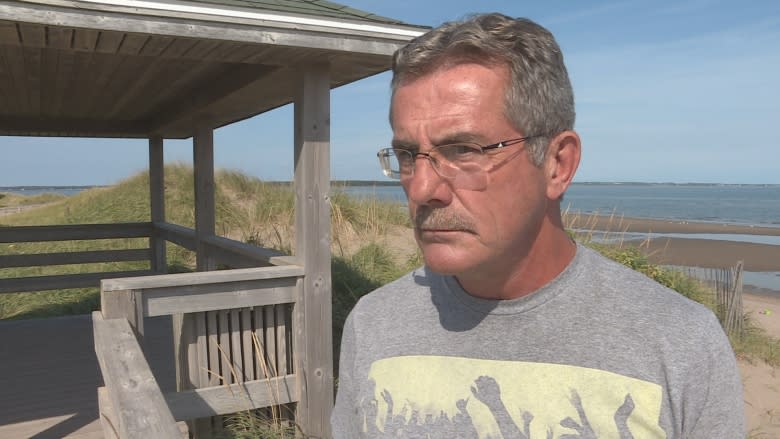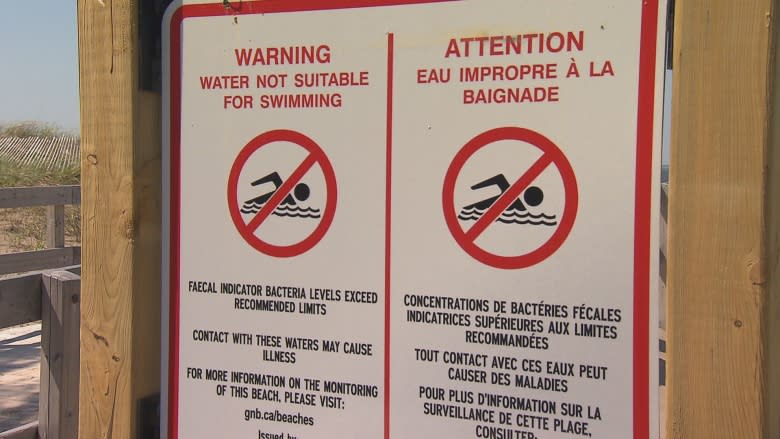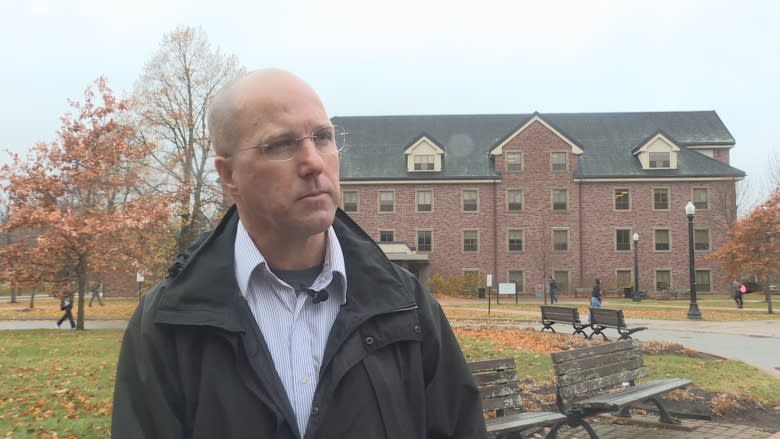1st weekend of fall sees no-swimming advisories at Parlee, Murray beaches
The first weekend of fall was a hot one in New Brunswick but people looking to cool off at Parlee or Murray beaches could have seen no-swimming advisories.
An advisory was issued at Parlee on Friday because of an E. coli sample of more than 400 units/100 ml of water, and one was in place at Murray on both Saturday and Sunday because of high enterococci and E. coli levels.
The high counts even after the tourist season is over — and thousands of tourists and cottage owners gone, have residents like Bill Ross asking questions.
- Visitor numbers down at Parlee Beach
"There's no boats in the water, or very few," said Bill Ross, a Pointe-du-Chêne cottage owner.
"We know it's not from bather load because the people aren't here," he said. "So obviously it has another source."
But those high fecal counts aren't entirely surprising, according to Douglas Campbell, biology professor at Mount Allison University.
Campbell said a study by the Shediac Bay Watershed Association last year found fecal contamination present even in October.
"This is not purely a summertime issue, this does persist," Campbell said.
"There could be a lag between the toilet, wherever it is, and the counts showing up at the beach. So buildup of contamination during the summer — it's not necessarily going to disappear instantly."
8 no-swimming advisories at Parlee
After controversy over a less-strict made-in New Brunswick system used to rate water quality, and failure of government to warn beach users about high fecal bacterial levels over a number of years, the province adopted the guidelines for Canadian recreational water quality this summer.
Under the new guidelines, Parlee Beach saw no-swimming advisories on eight days and Murray Beach saw them on nine days.
The highest bacterial counts were seen on Aug. 22 at Parlee, where one sample found fecal bacteria of 1,616 enterococci /100 ml water, almost 25 times above acceptable standards.
At Murray Beach, the worst day of the summer was July 22, where a sample of 2,014 enterococci/ 100 ml water was taken, almost 30 times above norms.
The provincial park beaches were officially closed for the season on Labour Day weekend, although it is still possible for people to go there.
Which sources to target?
Campbell, who is working with the provincial steering committee, said there are probably at least five or six types of sources of fecal contamination at Parlee Beach.
"There are many things going on along that coast that are delivering fecal bacteria to those shores," he said. "We could start to go down a list.
"I think the question that we're still wrestling with is which sources could be remediated most effectively — where are we going to get the best return on our effort."
Campbell said that question is what the provincial working group is focusing its efforts on.
In the past, some of the sources that have been named were boats, cottages using septic systems that aren't up to code, leakages, overflows and other issues with the municipal sewage system or sewage lagoon, dogs on the beach and questionable farming practices.
Campbell said the good news is that once a plan is put in place to address the sources, the water quality will improve "in weeks to months."
"We haven't irrevocably ruined the Northumberland Strait," Campbell said. "It's not like an industrial waste site or something that is forever poisonous."
Water sampling will continue into November, according to the Department of Environment, which expects to have most studies completed later this fall.
"The steering committee will then synthesize all the data and information in order to make recommendations to government," Marc André Chiasson, communications officer for the department, said in an email to CBC.
Chiasson added that it would be "premature" to comment on conclusions regarding sources of contamination until government has had the opportunity to review the steering committee's recommendations in early 2018.






